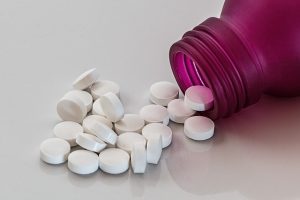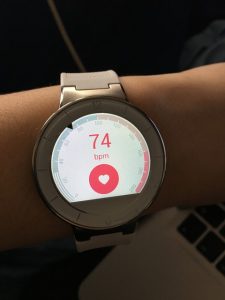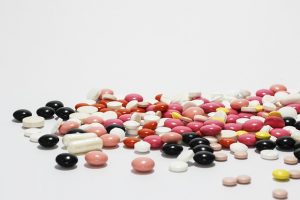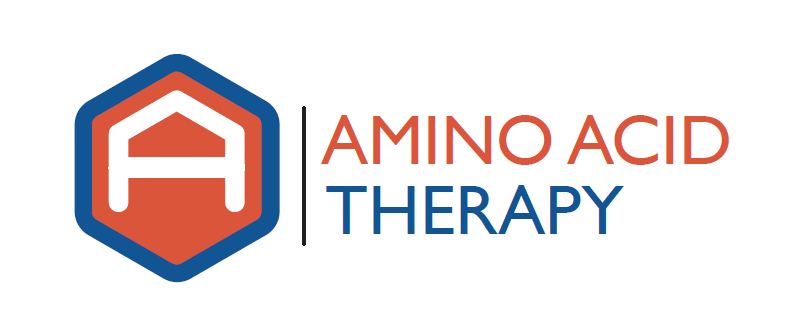by aatadmin | Mar 21, 2018 | Amino Acid Therapy, dopamine dominance, Symptoms of Neurotransmitter Imbalance
 In the process of optimizing a person’s neurotransmitter function, it is not uncommon for people to experience transient states of nausea. This is particularly common for those that are dopamine dominant. However, getting this nausea under control as quickly as possible is crucial for long-term success. (more…)
In the process of optimizing a person’s neurotransmitter function, it is not uncommon for people to experience transient states of nausea. This is particularly common for those that are dopamine dominant. However, getting this nausea under control as quickly as possible is crucial for long-term success. (more…)
by aatadmin | Mar 7, 2018 | Amino Acid Therapy, Parkinson's Disease, Symptoms of Neurotransmitter Imbalance
 Self-treatment with amino acids is incredibly common; we receive emails and/or calls every week from people that are ‘trying’ amino acid therapy on their own, but not getting the results that they want/need. In addition to these instances, I’m going to suggest that the definition of self-treatment be expanded to include anyone that actively or passively does not follow their health care professionals recommended supplement protocol – either by “experimenting” with doses other than those recommended or by using “similar” products to those recommended. This approach rarely works, and the reasons are pretty straightforward. (more…)
Self-treatment with amino acids is incredibly common; we receive emails and/or calls every week from people that are ‘trying’ amino acid therapy on their own, but not getting the results that they want/need. In addition to these instances, I’m going to suggest that the definition of self-treatment be expanded to include anyone that actively or passively does not follow their health care professionals recommended supplement protocol – either by “experimenting” with doses other than those recommended or by using “similar” products to those recommended. This approach rarely works, and the reasons are pretty straightforward. (more…)
by aatadmin | Feb 21, 2018 | Amino Acid Therapy, dopamine dominance, Parkinson's Disease, Symptoms of Neurotransmitter Imbalance
 The sensation that a person’s heart races, often described as “heart palpitations”, after taking a dose of amino acids occurs in roughly 10% of the people we see that are following a dopamine dominant protocol. (more…)
The sensation that a person’s heart races, often described as “heart palpitations”, after taking a dose of amino acids occurs in roughly 10% of the people we see that are following a dopamine dominant protocol. (more…)
by aatadmin | Jan 17, 2018 | Amino Acid Therapy, Neurotransmitters, Parkinson's Disease, Symptoms of Neurotransmitter Imbalance
 Many people are on medications that alter, mimic or in some way manipulate neurotransmitter levels in the body. These include stimulants, such as amphetamines (i.e., methamphetamine, “speed”, Adderall, Vyvanse, Dexedrine), ecstasy (MDMA), cocaine, and methylphenidate (i.e., Ritalin, Concerta); norepinephrine-reuptake inhibitors (i.e., Strattera, Edronax); norepinephrine-dopamine reuptake inhibitors (i.e., Wellbutrin, Zyman); selective serotonin reuptake inhibitors (i.e., Paxil, Prozac, Zoloft, Celexa, Lexapro and Luvox); triptans (i.e., Imitrex, Maxalt, Amerge, Zomig); sleep aids (i.e., Ambien, Lunesta); barbiturates (i.e., phenobarbital, Fioricet); benzodiazepines (i.e., Xanax, Klonopin, Valium, Lorazepam); MAO inhibitors (i.e., Azilect, selegiline, Nardil, Morplan); COMT inhibitors (i.e., Comtan, Tasmar); and carbidopa/levodopa (i.e., Sinamet, Rytary, Stalevo). While these medications may exacerbate or cause neurotransmitter imbalances in the body, most can be safely used along with amino acid therapy to achieve optimal neurotransmitter function. (more…)
Many people are on medications that alter, mimic or in some way manipulate neurotransmitter levels in the body. These include stimulants, such as amphetamines (i.e., methamphetamine, “speed”, Adderall, Vyvanse, Dexedrine), ecstasy (MDMA), cocaine, and methylphenidate (i.e., Ritalin, Concerta); norepinephrine-reuptake inhibitors (i.e., Strattera, Edronax); norepinephrine-dopamine reuptake inhibitors (i.e., Wellbutrin, Zyman); selective serotonin reuptake inhibitors (i.e., Paxil, Prozac, Zoloft, Celexa, Lexapro and Luvox); triptans (i.e., Imitrex, Maxalt, Amerge, Zomig); sleep aids (i.e., Ambien, Lunesta); barbiturates (i.e., phenobarbital, Fioricet); benzodiazepines (i.e., Xanax, Klonopin, Valium, Lorazepam); MAO inhibitors (i.e., Azilect, selegiline, Nardil, Morplan); COMT inhibitors (i.e., Comtan, Tasmar); and carbidopa/levodopa (i.e., Sinamet, Rytary, Stalevo). While these medications may exacerbate or cause neurotransmitter imbalances in the body, most can be safely used along with amino acid therapy to achieve optimal neurotransmitter function. (more…)
by aatadmin | Jan 3, 2018 | Amino Acid Therapy, dopamine dominance, Symptoms of Neurotransmitter Imbalance
 A person undertaking amino acid therapy will have periodic urine testing completed in order to determine if/how to adjust their amino acid dosing in order to optimize neurotransmitter function. Along the way, they may get a lab value for dopamine (or serotonin) that is much higher than is expected. This is often referred to as a “dopamine fluctuation”. We have provided a two part series discussing the dopamine fluctuation in more detail; here I wanted to provide a brief overview of what a dopamine fluctuation is and why it’s important to find and correct them as soon as possible. (more…)
A person undertaking amino acid therapy will have periodic urine testing completed in order to determine if/how to adjust their amino acid dosing in order to optimize neurotransmitter function. Along the way, they may get a lab value for dopamine (or serotonin) that is much higher than is expected. This is often referred to as a “dopamine fluctuation”. We have provided a two part series discussing the dopamine fluctuation in more detail; here I wanted to provide a brief overview of what a dopamine fluctuation is and why it’s important to find and correct them as soon as possible. (more…)
by aatadmin | Dec 20, 2017 | Amino Acid Therapy, diabetes, Neurotransmitters, Symptoms of Neurotransmitter Imbalance

Close up of sugar and sweetener packets
Aspartame is a widely used artificial sweetener. Since its discovery in 1965, it has been used in thousands of food products as a non-caloric sweetener. Aspartame is about 200 times sweeter than sucrose (table sugar). However, aspartame is not the only artificial sweetener found in foods; others include saccharin, neotame, acesulfame potassium, and sucralose. More than 6000 new products that contain artificial sweeteners were launched in the United States between 1999 and 2004, including soft drinks, baby food, Pedialyte, frozen foods, chewing gum and many (many) foods aimed at weight loss and blood sugar management (see other posts on the effects of artificial sweeteners and blood sugar and weight gain). (more…)
 In the process of optimizing a person’s neurotransmitter function, it is not uncommon for people to experience transient states of nausea. This is particularly common for those that are dopamine dominant. However, getting this nausea under control as quickly as possible is crucial for long-term success. (more…)
In the process of optimizing a person’s neurotransmitter function, it is not uncommon for people to experience transient states of nausea. This is particularly common for those that are dopamine dominant. However, getting this nausea under control as quickly as possible is crucial for long-term success. (more…)
 Self-treatment with amino acids is incredibly common; we receive emails and/or calls every week from people that are ‘trying’ amino acid therapy on their own, but not getting the results that they want/need. In addition to these instances, I’m going to suggest that the definition of self-treatment be expanded to include anyone that actively or passively does not follow their health care professionals recommended supplement protocol – either by “experimenting” with doses other than those recommended or by using “similar” products to those recommended. This approach rarely works, and the reasons are pretty straightforward.
Self-treatment with amino acids is incredibly common; we receive emails and/or calls every week from people that are ‘trying’ amino acid therapy on their own, but not getting the results that they want/need. In addition to these instances, I’m going to suggest that the definition of self-treatment be expanded to include anyone that actively or passively does not follow their health care professionals recommended supplement protocol – either by “experimenting” with doses other than those recommended or by using “similar” products to those recommended. This approach rarely works, and the reasons are pretty straightforward.  The sensation that a person’s heart races, often described as “heart palpitations”, after taking a dose of amino acids occurs in roughly 10% of the people we see that are following a
The sensation that a person’s heart races, often described as “heart palpitations”, after taking a dose of amino acids occurs in roughly 10% of the people we see that are following a  Many people are on medications that alter, mimic or in some way manipulate neurotransmitter levels in the body. These include stimulants, such as amphetamines (i.e., methamphetamine, “speed”, Adderall, Vyvanse, Dexedrine), ecstasy (MDMA), cocaine, and methylphenidate (i.e., Ritalin, Concerta); norepinephrine-reuptake inhibitors (i.e., Strattera, Edronax); norepinephrine-dopamine reuptake inhibitors (i.e., Wellbutrin, Zyman); selective serotonin reuptake inhibitors (i.e., Paxil, Prozac, Zoloft, Celexa, Lexapro and Luvox); triptans (i.e., Imitrex, Maxalt, Amerge, Zomig); sleep aids (i.e., Ambien, Lunesta); barbiturates (i.e., phenobarbital, Fioricet); benzodiazepines (i.e., Xanax, Klonopin, Valium, Lorazepam); MAO inhibitors (i.e., Azilect, selegiline, Nardil, Morplan); COMT inhibitors (i.e., Comtan, Tasmar); and carbidopa/levodopa (i.e., Sinamet, Rytary, Stalevo). While
Many people are on medications that alter, mimic or in some way manipulate neurotransmitter levels in the body. These include stimulants, such as amphetamines (i.e., methamphetamine, “speed”, Adderall, Vyvanse, Dexedrine), ecstasy (MDMA), cocaine, and methylphenidate (i.e., Ritalin, Concerta); norepinephrine-reuptake inhibitors (i.e., Strattera, Edronax); norepinephrine-dopamine reuptake inhibitors (i.e., Wellbutrin, Zyman); selective serotonin reuptake inhibitors (i.e., Paxil, Prozac, Zoloft, Celexa, Lexapro and Luvox); triptans (i.e., Imitrex, Maxalt, Amerge, Zomig); sleep aids (i.e., Ambien, Lunesta); barbiturates (i.e., phenobarbital, Fioricet); benzodiazepines (i.e., Xanax, Klonopin, Valium, Lorazepam); MAO inhibitors (i.e., Azilect, selegiline, Nardil, Morplan); COMT inhibitors (i.e., Comtan, Tasmar); and carbidopa/levodopa (i.e., Sinamet, Rytary, Stalevo). While  A person undertaking amino acid therapy will have periodic urine testing completed in order to determine if/how to adjust their amino acid dosing in order to optimize neurotransmitter function. Along the way, they may get a lab value for dopamine (or serotonin) that is much higher than is expected. This is often referred to as a “dopamine fluctuation”. We have provided a
A person undertaking amino acid therapy will have periodic urine testing completed in order to determine if/how to adjust their amino acid dosing in order to optimize neurotransmitter function. Along the way, they may get a lab value for dopamine (or serotonin) that is much higher than is expected. This is often referred to as a “dopamine fluctuation”. We have provided a 
